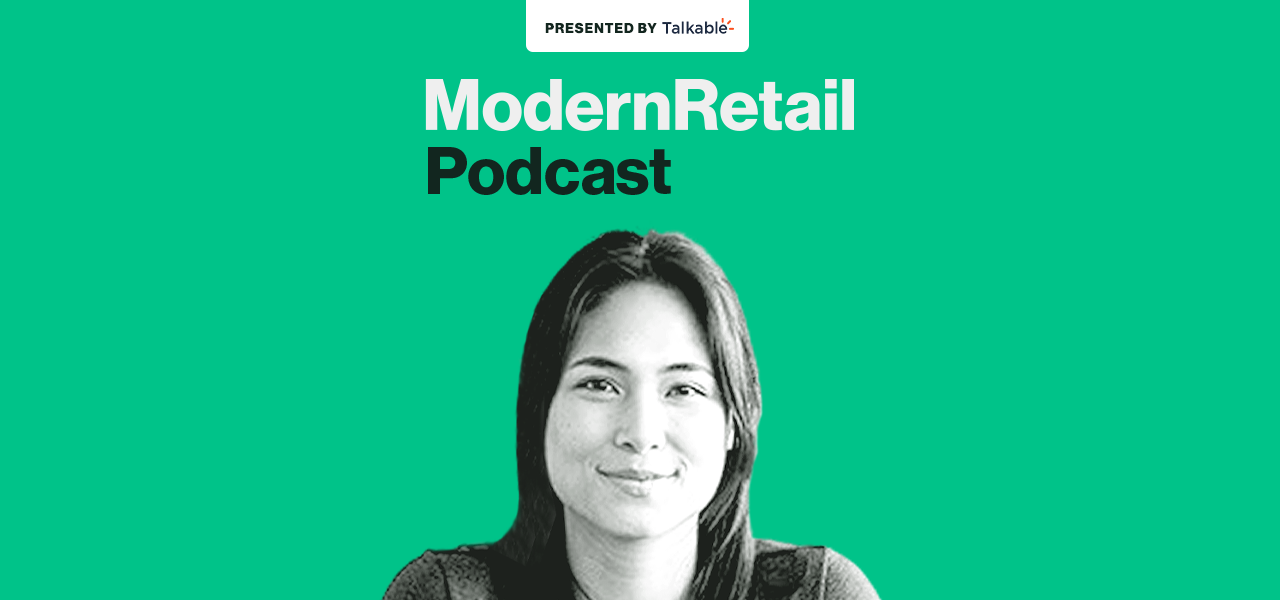Sabai’s Phantila Phataraprasit on building a sustainable furniture brand from the ground up

Subscribe: Apple Podcasts | Stitcher | Google Play | Spotify | RSS
For direct-to-consumer furniture brand Sabai, sustainability reigns.
The brand, which launched in the summer of 2019, and saw a growth spike in both 2020 and 2021 — much of which was spurred by the pandemic-induced home boom. According to co-founder and CEO Phantila Phataraprasit, much of its growth was thanks to increased interest in sustainability.
Sabai’s products — which range from sofas to ottomans — are all produced with sustainability in mind. [Sustainability] can be in so many different things and be applied to so many different aspects of a business model,” said Phatarapsit. “We try to apply it to every single aspect.” She joined this week’s Modern Retail Podcast and spoke about the company’s growth.
Sabai sources recycled material for all its products, as well as uses plastic-free shipping. The brand also just launched a buy-back program in the hopes of making it possible for its used products to not be thrown out.
According to Phataraprasit, this has resonated with customers. “We maybe didn’t appreciate how much people throughout the country care about sustainability,” she said. She had originally thought Sabai would be popular in places like New York and Los Angeles, but it turns out people in smaller even suburban areas were also interested.
Now, the hope is to grow and get the word out even more. Phataraprasit spoke about Sabai’s social media plan — which includes using its Instagram following for product research, while also investing in other smaller, visually-driven advertising channels like Pinterest. The idea with all of Sabai’s social content is to build a brand that customers clearly understand its point of view and values.
“The community that we had on Instagram was very much part of [our product development] process,” she said.
Here are a few highlights from the conversation, which have been lightly edited for clarity.
On using Instagram for product development
“We [sent a survey] pre-launch — it was fully in the product development process… The community that we had on Instagram was very much part of that process. We just built a community of people that we saw as our demographic on Instagram — built a following there, did some light marketing: just reaching out to different people, following different people that we felt like resonated with the brand to try to get them involved in previewing what we were trying to do.”
‘People throughout the country care about sustainability’
“We maybe didn’t appreciate how much people throughout the country care about sustainability and buying sustainable products. And [we saw] a lot of individuals in cities like Chicago or Austin or Denver — who spend a lot of time outside and actually care about the environment and things like that — who want sustainable products. That’s something that we underestimated. Then, at the same time, [we also saw] people starting to move out there, especially during the pandemic.”
Pinterest is like TikTok
“Pinterest is a little bit similar to TikTok in the sense that it’s inspirational. The content itself [has] to be something that people actually resonate with — and will repost or pin on their board and actually use for inspiration. So, for Pinterest, the content has been really important — making sure that the content seems organic. Whereas, with Instagram ads, it seemed more explicitly like ads are okay. But for Pinterest, it’s more akin to TikTok where that organic content really works.”

